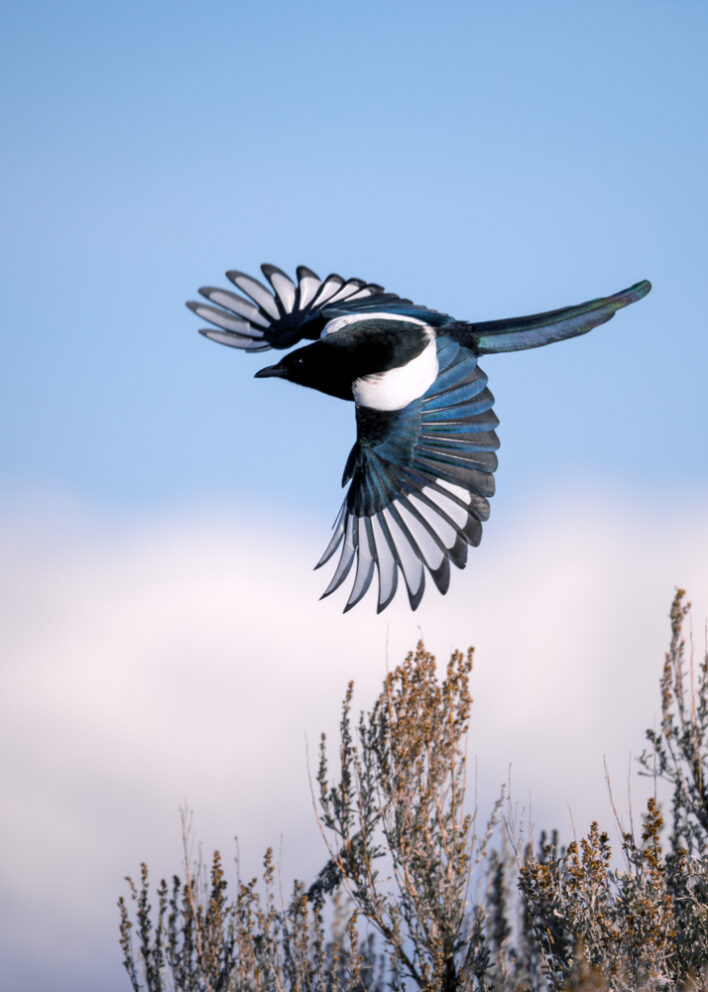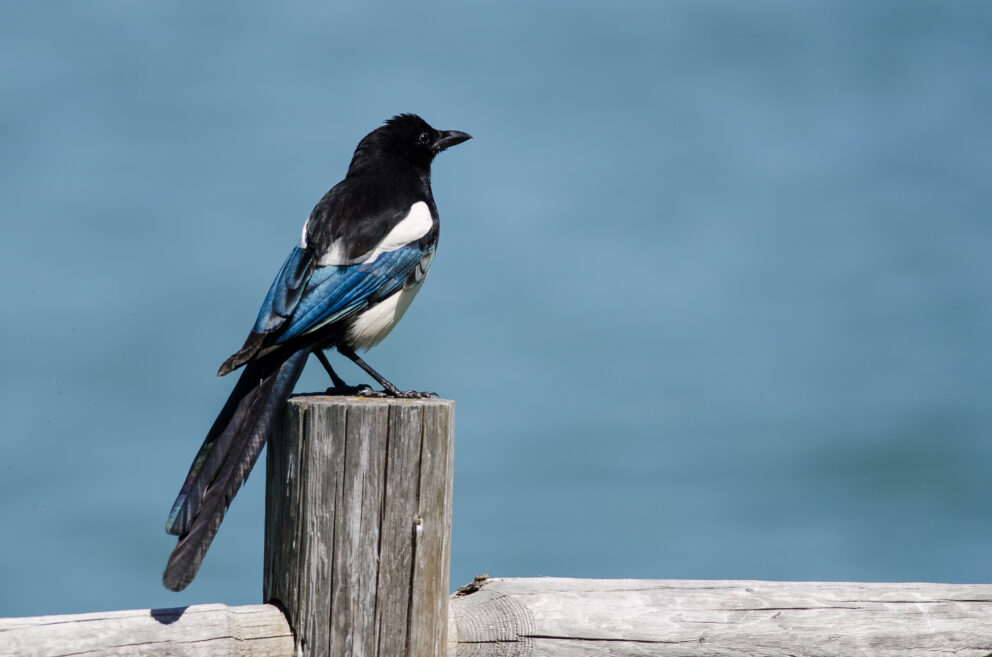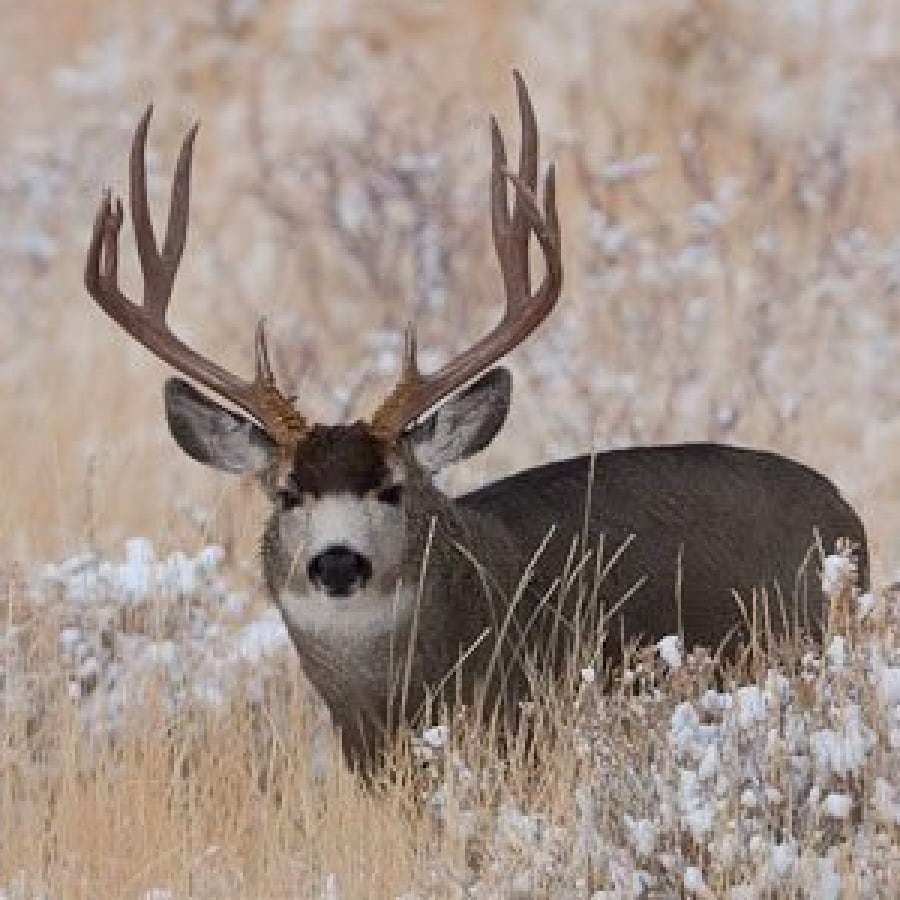- SCIENTIFIC NAME
- Pica hudsonia
- CLASSIFICATION
- Bird
- LIFE SPAN
- 3-9 Years
- SIZE
- 18-24” | .25-0.5lbs
- STATE CONSERVATION STATUS
-
- State Protected
- FEDERAL CONSERVATION STATUS
- Least Concern
- GAME STATUS
- Non-Game
- GAME TYPE
- None
- Washoe
- Humboldt
- Pershing
- Churchill
- Mineral
- Lyon
- Douglas
- Carson City
- Storey
- Elko
- Lander
- Eureka
- White Pine
- Esmeralda
- Nye
- Lincoln
- Clark
Habitat & Range
Black-billed Magpies are year-round residents in much of the western and central United States and western Canada. In Nevada, they are found throughout except for the very southern part of the state.
- Agricultural Lands
- Cold desert shrubland and sagebrush
- Grasslands
Threats
- Habitat Degradation
- Pesticides
Natural History
The Black-billed Magpie has a wide-ranging diet. They enjoy fruit, insects, eggs, small mammals, and even carrion. They sometimes cache food for short amounts of time, when a source is abundant. Although they typically prefer open habitats, the Black-billed Magpie will nest in deciduous trees or shrubs that are located up off the ground. Both sexes will aid in building a large, domed, canopy-like stick nest. Females will lay 1-9 tan-colored, brown-speckled eggs, producing a single brood per year.
Fun Facts
Black-billed Magpie can often be seen sitting on the backs of large mammals, such as deer or even cows. The Magpies are doing their hosts a favor by consuming ticks that would make a meal out of the large animals.














